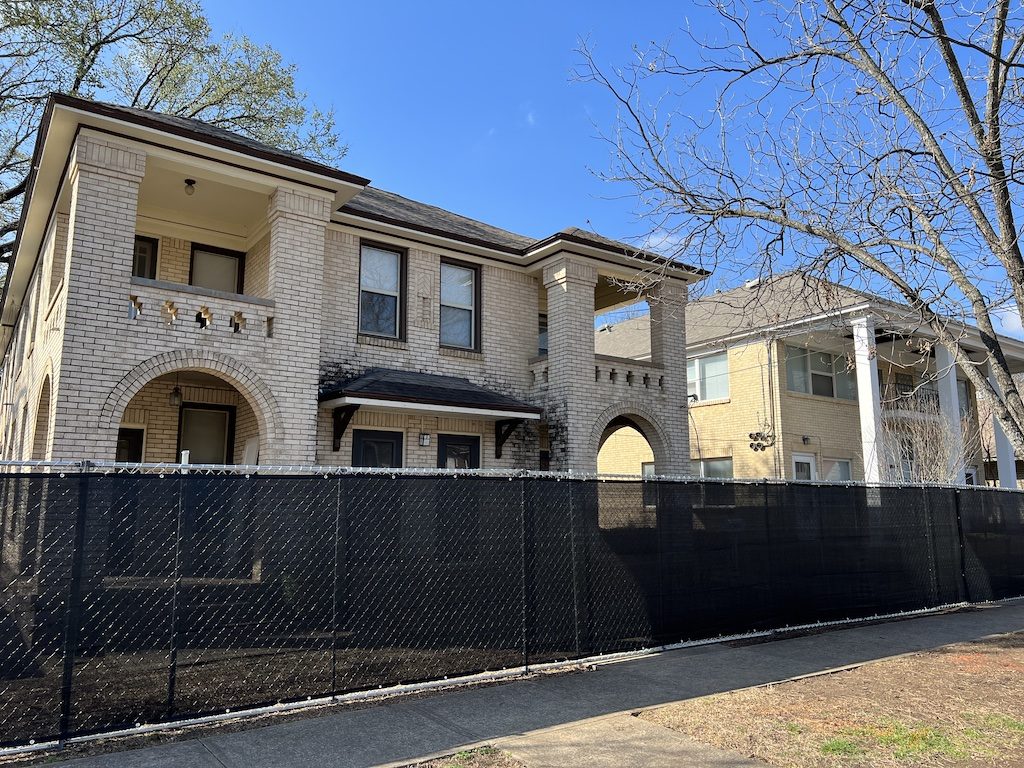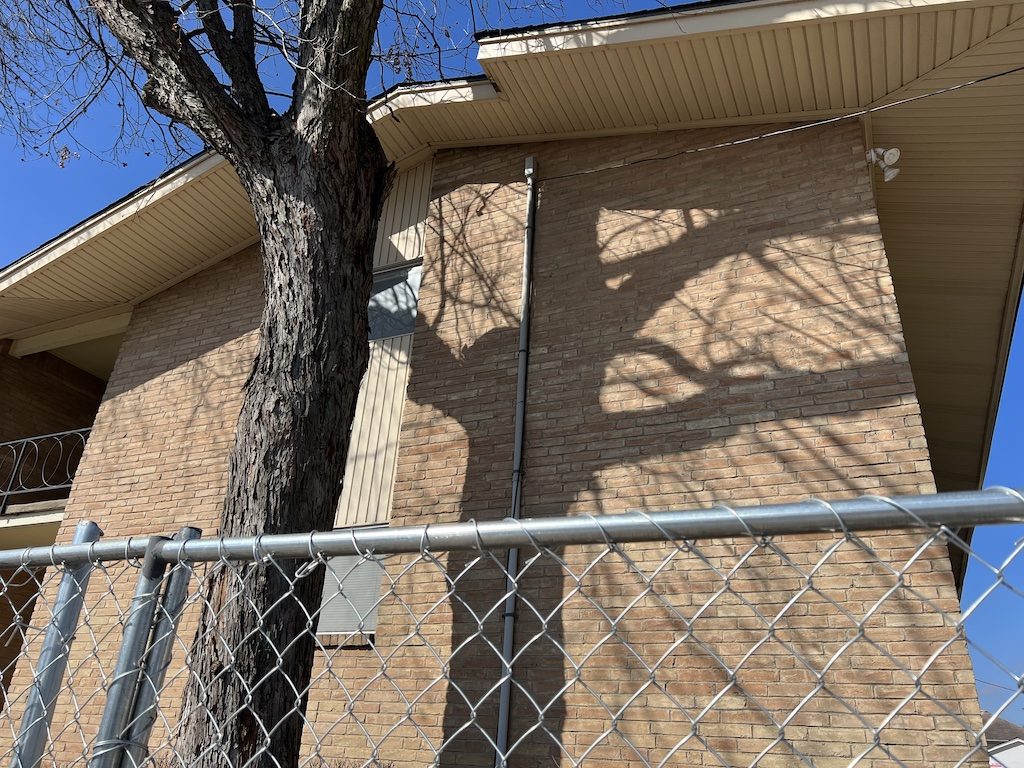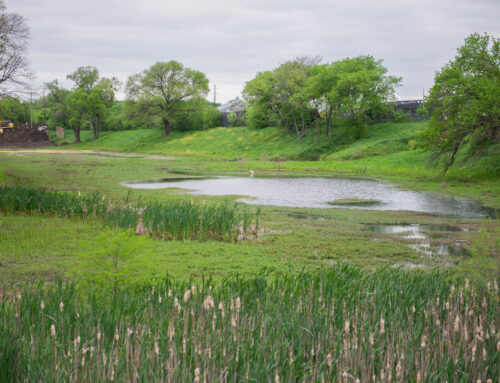The owner of a modest apartment block in Bishop Arts has the right to tear it down and redevelop it into a four-story apartment complex, and a demolition permit was issued March 8.
Several things led to this point, but the first was the Bishop/Davis zoning, passed in 2010, when Oak Cliff was still overlooked by investors, and stakeholders wanted to attract new development with permissive zoning requirements.
Mayor Pro-Tem Chad West’s office sent out an e-newsletter on Wednesday to explain the Bishop/Davis zoning.
From an economic standpoint, properties that allow for multiple types of uses and also increased heights and density will generate a higher price when put on the market. So it comes as no surprise that property owners in this area chose to assemble and combine properties and then package them for sale to high bidders, and in the case here, it is very likely that the buyer will build multifamily structures to maximize their return on their investment in the property.
Lennar Multifamily Corp. now owns the block, except for two properties on West Eighth at Llewellyn.
Lennar purchased it from Oaks Properties, which had the block “replatted” in 2018, making it possible to redevelop each side of the block as one property.
Oaks Properties bought it from the McDonald family, whose ancestor built the small apartment buildings in the 20th century. The family, still living in the neighborhood, has been supportive of permissive zoning changes and plans for its redevelopment.
For neighbors in the Bishop Arts and Winnetka Heights area, it’s a different story.
West says his office has heard from neighbors who are outraged over the proposed redevelopment, but not much can be done retroactively. He compared it to the 2017 demolition of El Corazon restaurant, which is now a CVS store on Zang near Beckley.
These cases highlight the need for more conservation districts in Oak Cliff.
From West’s e-newsletter, written with the help of several neighborhood preservationists:
While the structures on the block are historic, there is no Landmark or Conservation District overlay in place to prevent their demolition. The owners of those properties would have had to initiate those overlays in order to protect the structures. In this case, the developer was able to acquire the contiguous parcels on the block to create one large multifamily development allowed under the current zoning for the block. On March 8, 2022, the new owners procured a demolition permit for some of all of the properties on this block.
West says he is working with preservation groups to offer a seminar for neighbors on “alternatives to demolition,” as well as a possible workshop on how to create a conservation district in your neighborhood.
Here is more from West’s e-newsletter about how demolitions like this can be prevented in the future.
Proactive Measures
The zoning history aside, how should neighborhoods and the city move forward in seeking to protect beloved structures? How can we be more proactive? Here are some options to consider:
Financial Incentives
It is possible that if significant incentives were available, an owner might be persuaded to consider alternatives to demolition as part of the demolition delay process. Financial incentives are available on the federal and state level, and include historic tax credits for rehabilitation of qualifying historic properties, among other resources. Of course, no one can force a property owner to file for incentives – often, it is easier and faster to simply sell one’s property on the market.
From a city perspective, the property in question here likely sold for millions of dollars based on the zoning entitlements allowed. In order for the seller to hold onto the lot and preserve the housing stock, incentives would need to be extremely high. If this particular seller had been offered incentives to keep the housing in place, it would befair and equitable to provide the same opportunities to otherswho offer affordable units. The City is simply not capable of subsidizing such an endeavor in a fair and equitable way.
Historic Surveys
A proactive measure that should be undertaken citywide is the updating of its historic resource surveys, which is fundamental to land use decisions and can inform which properties/districts could be paired with incentives to leverage an owner’s request for designation. As of early 2022, and even before the possible demolition of the 8th Street properties came to light, David Preziosi from Preservation Dallas, and Diane Sherman, Landmark Commissioner for District 1, have been pulling together proposed boundaries for a survey of Oak Cliff neighborhoods, and Mayor Pro Tem West has pledged to find funds in the City budget to finance the survey.
This survey would be similar to the historic resource surveys recently completed in downtown Dallas and Deep Ellum. That survey is now being used to apply for National Register of Historic Places status for Deep Ellum so that qualifying properties there will be able to access historic tax incentives for rehabilitation in the future.
Participation in Area Planning
If the demolition of El Corazon and the likely demolition of the 8th Street properties teach us one thing, it’s that land use planning is the key to everything.
If neighborhoods don’t have planning in place (the El Corazon scenario), then they need to consider “taking the bull by the horns.” Neighbors who want to preserve architectural details and things like setbacks, height, etc., and prevent demolitions of our housing stock should consider gathering petitions to form a Conservation or Historic District. And they should reach out to neighborhoods like Winnetka Heights Neighborhood Association, Lake Cliff Historic District, or Stevens Park Estates to gather best practice tips on the process. Heritage Oak Cliff, Preservation Dallas, and the City’s Planning & Urban Design office are also great resources for neighborhoods seeking protection from “upzoning.”
When land use plans are proposed for an area, it is crucial that residents actively participate by attending neighborhood meetings, reading through proposed planning documents, and voicing their opinions.[4] Lastly, note that the procedure to get to more density (i.e. upzoning or development) and protection (historic/conservation overlays) is the same – both require land use planning and a public process. So whether you’re a staunch preservationist, hard core developer, or somewhere in between, know that the terms “plan” or “land use plan” are relevant to you and not necessarily a bad thing – you just need to dig in, learn more, and advocate for what you believe in. Just like with anything in life, you may not get the exact result you seek whether it’s neighborhood preservation, affordable housing, or new development, but you have a much better chance if you’re involved!








